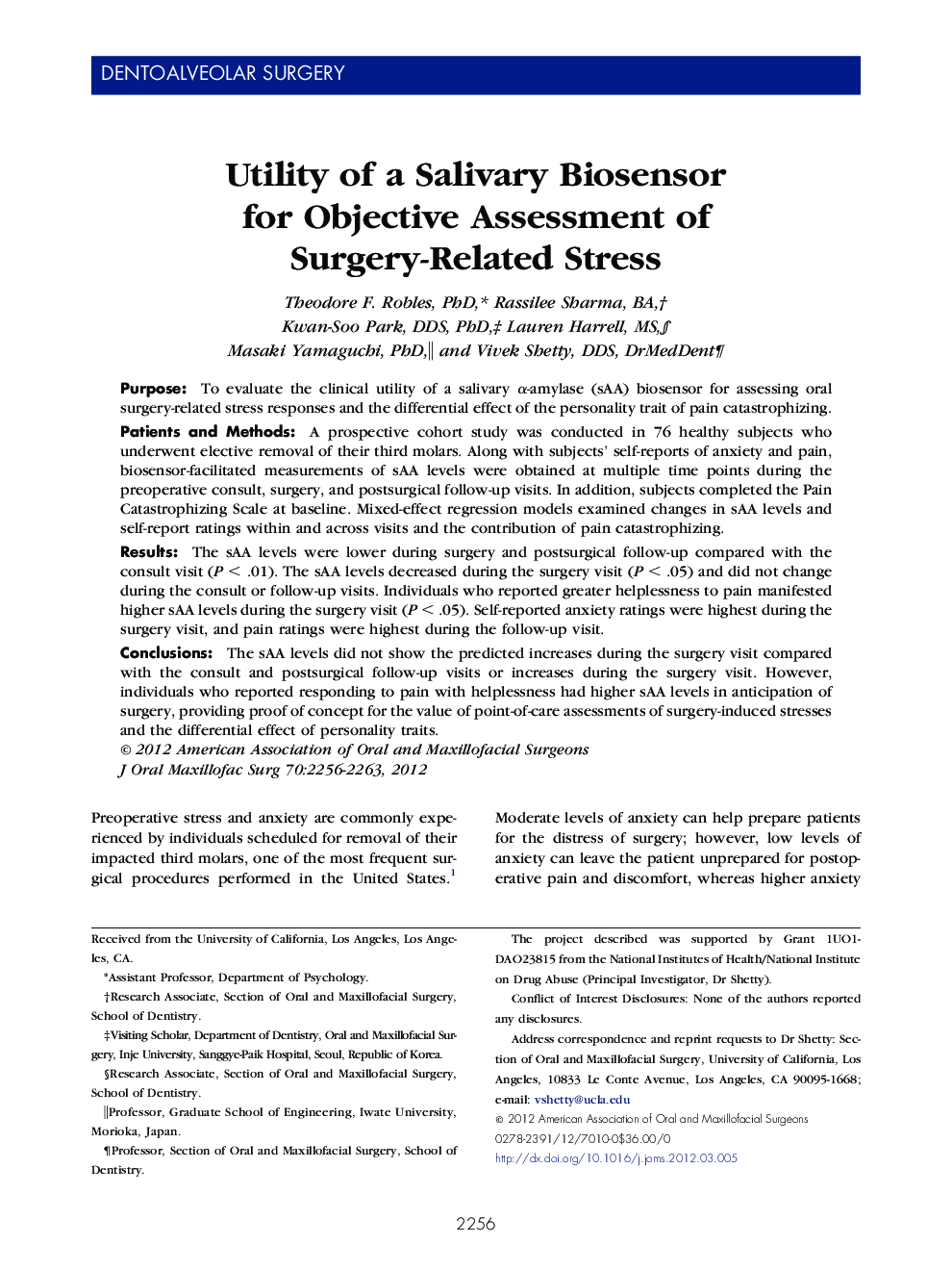| Article ID | Journal | Published Year | Pages | File Type |
|---|---|---|---|---|
| 3156629 | Journal of Oral and Maxillofacial Surgery | 2012 | 8 Pages |
PurposeTo evaluate the clinical utility of a salivary α-amylase (sAA) biosensor for assessing oral surgery-related stress responses and the differential effect of the personality trait of pain catastrophizing.Patients and MethodsA prospective cohort study was conducted in 76 healthy subjects who underwent elective removal of their third molars. Along with subjects' self-reports of anxiety and pain, biosensor-facilitated measurements of sAA levels were obtained at multiple time points during the preoperative consult, surgery, and postsurgical follow-up visits. In addition, subjects completed the Pain Catastrophizing Scale at baseline. Mixed-effect regression models examined changes in sAA levels and self-report ratings within and across visits and the contribution of pain catastrophizing.ResultsThe sAA levels were lower during surgery and postsurgical follow-up compared with the consult visit (P < .01). The sAA levels decreased during the surgery visit (P < .05) and did not change during the consult or follow-up visits. Individuals who reported greater helplessness to pain manifested higher sAA levels during the surgery visit (P < .05). Self-reported anxiety ratings were highest during the surgery visit, and pain ratings were highest during the follow-up visit.ConclusionsThe sAA levels did not show the predicted increases during the surgery visit compared with the consult and postsurgical follow-up visits or increases during the surgery visit. However, individuals who reported responding to pain with helplessness had higher sAA levels in anticipation of surgery, providing proof of concept for the value of point-of-care assessments of surgery-induced stresses and the differential effect of personality traits.
